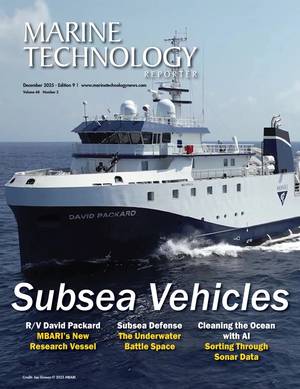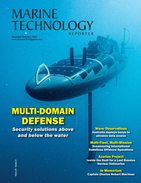Inside the NOC Robotics Center
Much innovation in subsea robotics starts in academia, and the National Oceanography Centre in Southampton, UK, is a global leader with a fleet of more than 40 systems and 60 engineers and scientists. Alex Phillips, is the Head of Marine Autonomous Robotic Systems (MARS) at NOC, and Marine Technology recently caught up with him in his workshop to discuss key drivers in the evolution of efficient, effective underwater autonomous systems.
Question: Alex, can you give us a brief career background and your role here at NOC?
ALEX:
I'm a naval architect by training. I thought I would go and design yachts for a living;, I got a little distracted, and started sinking things. About 15 years ago, I got involved in a student competition to design and build AUVs. And that was much more interesting than what I was doing for a real job at the time. I got to build these small AUVs, do all the software, do all the hardware, do all the electronics, to break them…they never really worked very well. But in that process, I got a real passion for building this kind of technology. So, I finished my PhD at Southampton, and then came down to the NOC 10 years ago to run projects and build a team to develop new and cool robots. Ten years later, I'm heading up the facility here. So, we've got about 40 marine robots, and we've got about 60 engineers, computer scientists, and researchers. And we're all here to develop, build, operate, [subsea vehicles] and go and make measurements in the ocean for the ocean science community.
Question: Why don't you tell us a little bit about the NOC's autonomous robotics fleet?
ALEX:
We have a fleet of about 40 vehicles, and they vary substantially. So, we buy in a lot of kit, so we buy underwater gliders. We've got a large ROV. We also design, build, and operate the Autosub AUVs. And these are the bit that really excite me because this is all the stuff that we do in-house. We've designed them, we've built them, we've written all the software, we've designed the control systems. We've crashed them, thrashed them, and occasionally lost them. But we really understand every bit of the subs, and that allows us to adapt them for trying to gather different types of ocean science data that people haven't done before.
Question: What are the drivers for these vehicles today?
ALEX:
So, we see a lot at the moment around persistence, being out in the water for longer. So, whether that's deploying gliders from shore and having them operate for weeks or months; putting these long-range vehicles out for weeks and months, that ability to get vehicles out and about without the need for a research ship, that's really quite a big driver for us at the moment. It just allows us to expand on what we can do. We can't do anywhere near everything they do with a ship with one of these, but we can do some of it. And if by doing some of it, we free the ship up to go and do the stuff we can't do, so it's a win-win.
On the science requests side, we always see requests for under ice. A lot of the Autosub program originated with some of the under ice work in the early 2000s. So that's always a driver, and we're just seeing more and more of it, driven by the need to understand melt rate of glaciers, sea ice thinning, all of these really important problems. We are also seeing a lot more requests around the carbon cycle, so understanding how the ocean sequesters CO2. And, obviously, if you can put sensors onto these vehicles that can measure things like pH, total alkalinity, dissolved inorganic carbon, you can start to help scientists get to grips with what's a really complicated problem.
Question: In the span of your career, what technologies do you count as being the most dramatic in their impact on the efficiency of these operations?
ALEX:
The really boring answer: a lot of it is just about polishing the basics. Actually, having these systems be robust, so you put them in the water and they work. And that takes a long time. Go and ask anyone who develops ocean tech, and it takes a long time to get things really robust in the water. And if we're honest, we've spent a long time doing that with our tech. But, now, we've got a very stable, robust platform. We've got some really interesting opportunities to leverage some of the new technologies that are coming. So, there's some really interesting sensor technology coming through at the moment, which is allowing us to measure new parameters. Some of the lab-on-chip type technologies that are developed here, now, able to put a full chemistry lab onto these vehicles to measure the nutrients and the carbon chemistry in the water column.
New imaging systems that we can put onto these vehicles to either look at the plankton in the water column or count the critters on the seabed. The increase in sensor capability has allowed us to tackle some new problems. But, also, the long-range vehicles we have, because they're a bit bigger, it allows us to stack more sensors on board so you're not just measuring a single parameter now, you've potentially got, as I said, lots of carbonate chemistry, lots of nutrient chemistry, all going on board with turbulence, with CTD. You can build a much more capable platform. And as we're getting more data, then you're starting to really run into things like machine learning and the need for those kind of technologies to deal with the data sets that are coming off the platforms, particularly around the imaging. Hopefully, the days of PhD students having to go through 100,000 Autosub images with the seabed to count the critters are gone, and we can start to use some smarter tools for that.
Question: Can you talk wholistically about AI, machine learning, and how that is materially impacting the work that you do?
ALEX:
We use it in a number of areas. We've been doing some work with Oxford Robotics Institute, running gliders up in the North Sea, where they've designed some clever algorithms to pilot gliders, and reduce the human overload with constantly running vehicles. We use AI, as I talked about, for data interpretation. That sits over more with the science community, and they use it extensively to try and deal with the data sets that we're generating.
One of the areas that we're interested in is using some of the machine learning tools is to identify faults onboard the vehicle because, sometimes, it's really hard to disentangle why a vehicle isn't going up or down in the water column. Is the pitch sensor broken? Is it the pressure sensor broken? There are all sorts of different failure modes which can lead you to not be moving up and down in the water column the way that you'd like to. So, can you use some of the machine learning tools to do anomaly detection in the first instance? If something's wrong, can we do something about it? Or can you more accurately identify and pin down faults to particular systems so that you can react in an advisable way, given the information you've got?
Question: When you look back, was there one mission, one particular use of your vehicles, that you were like, "Wow," that really stands out?
ALEX:
I think with the Autosub long-range vehicles, the activity we did last year as part of the NERC funded BIO-Carbon Program. We launched two ALRs from Iceland with biogeochemical sensor fits, and the ambition was to get them all the way back to Scotland. We didn't quite manage that with both vehicles, one did have to be recovered early. But the other vehicle made it all the way from Iceland to Scotland, which was quite a long way for an AUV.
What was really interesting was the kind of science that we were doing, the sensors that were on board. It was packed full of these lab-on-chip chemical sensors, and we spent a huge amount of time working with the science users just to figure out what they were trying to measure, and how we had to get the vehicle to operate. With a normal AUV, you imagine them flying at a constant depth, or a constant altitude, above the bottom. With a glider, you manage them yo-yoing through the water. With these vehicles, we were doing a hybrid. We were stepping through different layers in the water to make chemical measurements in different water masses. We were doing the profiling up and down to get the vertical gradients. We were chasing floats. We were meeting up with ships. We were out in the water for six weeks, and it was a really exciting activity for us because it really started to show what you can do with this kind of tech.
Question: Persistence is important, and there’s a lot of work going into keeping the vessels at sea longer, include ‘electrification’ of the seabed. Where are we today in terms of keeping these AUVs powered, out and persistent?
ALEX:
It's a really interesting question. There are two approaches out there for this persistent AUV operation. You've got more hover-style vehicles that are docking onto the seabed and recharging to keep their energy supplies up. We've taken a much simpler approach: where we just pack the things full of primary batteries to get that long endurance. With that, we go for low-power sensors; we go through the water slowly. By managing that energy budget, you can potentially eke out one of these vehicles to six months operation. But then you're into a whole load of new pain, with biofouling, corrosion, and other issues that you don’t worry about for a two-week deployment.
The preceding was edited for content and clarity. Watch the full interview with Alex Phillips on Marine Technology TV.


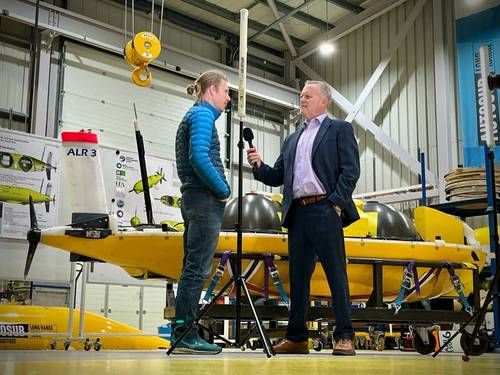




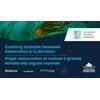






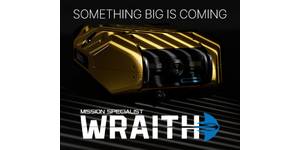
 December 2025
December 2025
